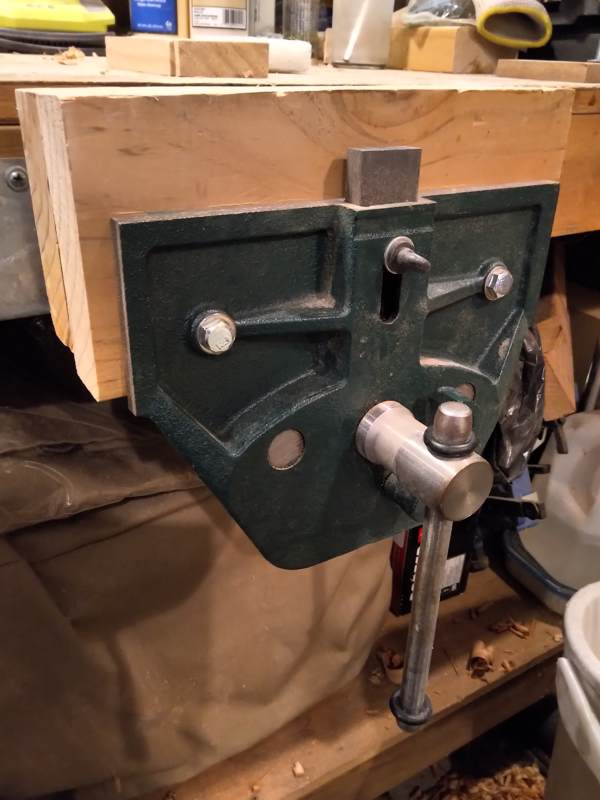I started a new job back in September, while the office was completely closed. I about reached the end of my work-from-home productivity rope this Spring, so I appealed to my boss to be allowed to start coming in to the office. It’s been a good move, productivity-wise, as I am able to focus on work much better when I am not in the same room with so much of my crafting equipment and materials.
One thing I was really missing about my home office though, was the ability to work while standing. At home, I had started putting the cedar stepstool up on the craftsman endtable, and using that assembly as a standing desk for my work laptop. In the office, I’m using a desktop computer with a full keyboard, and the stepstool is not wide enough to accommodate that and a mouse.
Luckily, I still had some finished pine shelves from the old house in the garage. I cut one of them up into pieces, joined the pieces with dowels and glue, reinforced the joins with some metal right-angle brackets, finished the cut ends of the pieces, and now I have a standing desk for work without having to appeal to the furniture gatekeepers for an expensive motorized desk.
If you are interested in my ginchy custom desktop backgrounds, see the “Liberty Exit” and “Tokyo Maple Shrine” images in my Desktops Gallery.






